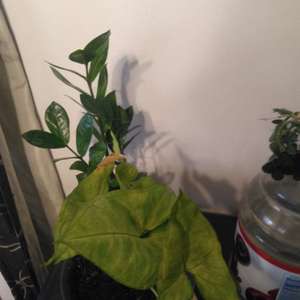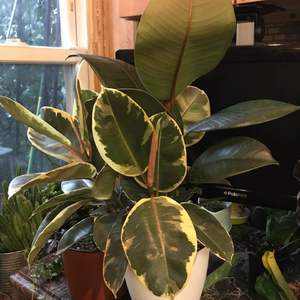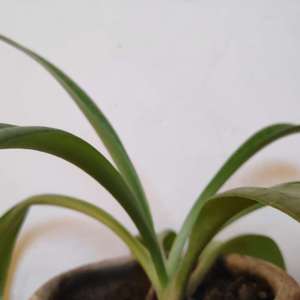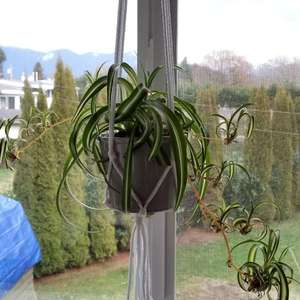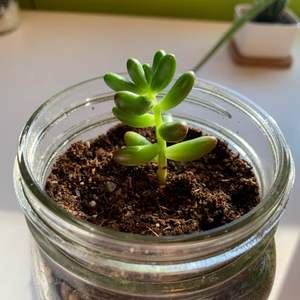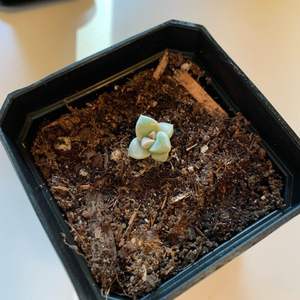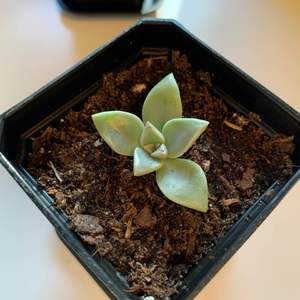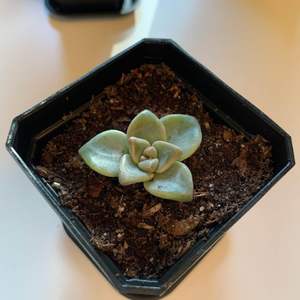求助
Kim Krystal Watts
2019年01月09日

Need help identifying this plant please
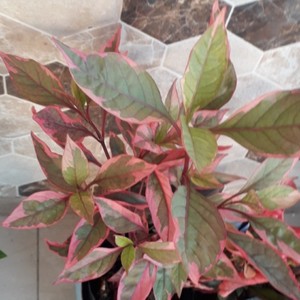

0
0
林有鹿鸣:Alternanthera bettzickiana(Regel) Nichols?
求助
Cmckee0913
2019年01月05日

Anyone have the id of this plant


0
0
suculea:pachyphytum ovirerum - moon stones
瞇瞇瞇瞇:Pachyphytum ‘Blue Haze’
文章
Andy
2018年12月26日

Facebook Pinterest Twitter Google+ LinkedIn StumbleUponLearn how to grow a tamarind tree in this complete article. Growing tamarind tree is easy, it’s a low care plant with a few requirements.

USDA Zone — 9b to 11
Difficulty — Easy
(adsbygoogle = window.adsbygoogle || []).push({});
Other Names — Tamarindus indica, tamarindo, tamarin, tamarinier, tamarinier des Indes, tamarindier, tamarinde, sampalok, asam jawa, ambli, imli, chinch, ma-kharm.
Tamarind tree is native to Africa and grows like a wild plant in Indian subcontinent. It’s also grown across Southeast Asia, South America and tropical parts of Australia and North America.
Information about Tamarind Tree
Tamarind is a slow-growing tree. It’s able to reach a height of 25 m and a circumference of 7 m, very long-lived, in fact, it can survive for more than 300 years.
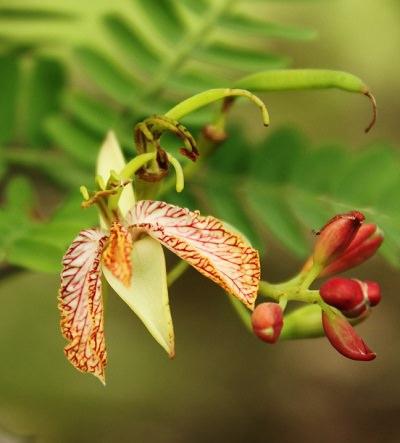

Tamarind leaves are evergreen, like pinnate up to 15 cm long consisting of 10 – 12 pairs of leaflets. Its leaves somewhat looks like acacia leaves. Tamarind flowers are grouped in inflorescence and have five yellow petals with red streaks. Pollination of flowers is entomophilous (pollinated by insects).
(adsbygoogle = window.adsbygoogle || []).push({});
Tamarind fruits are legumes. Slightly curved, 10 to 15 cm long and have a brown color. Its seeds, 4 to 12 in each pod, make up 34% of the legume and are inserted into a yellowish or brown colored pulp that taste very sour and sweet but pleasant and represents most of the fruit.
Compared to other fruits, in tamarind, during the maturation phase the acidity does not decrease, while the hydrolysis of the starch leads to an accumulation of reducing sugar (sucrose).
Tamarind pulp contains 70% carbohydrate, 3% protein and less than 1% fat, it also contains tartaric acid (8-10%), which also occurs in other fruits like bananas and grapes.
Tamarind Tree Varieties
There are different types of tamarind varieties, among which include: Sweet Tamarind, Australian tamarind, Manila tamarind, Velvet tamarind, Spanish Tamarind.
Propagation
Tamarind is propagated by seeds, grafting, cuttings and air layering. Seeds are viable for many months.
How to Grow Tamarind Tree from Seed
Soak tamarind seeds overnight in warm water to speed up germination. Sow seeds 1/2 inches deep in good quality seed starting mix. Germination occurs within one or two week after sowing.
*Plants grown from seeds do not go into production before the 6 – 7 years after germination. So it is better to grow tamarind from cutting or buy a plant from nursery if you want quick results.
Planting Tamarind
Dig a hole twice the size of the root ball of the plant. Gently remove the plant from the pot and cut dead or damaged roots. Insert the root ball in the hole and fill the soil around root ball to maintain the tree trunk above the soil line. Firm the soil and water the plant thoroughly.
For commercial growers, the planting density is large because of well developed foliage and width tamarind tree needs, the spacing should be around 5 – 15 m, depending more on the variety.
Position For Growing Tamarind Tree
Tamarind prefers tropical and subtropical, dry and windy climate. It can adapt even to the warm temperate climate, but there it’ll not be very productive. Young plants can’t withstand the cold, while the adults are resistant to temperature till 28 degree Fahrenheit only.
Best planting position is in full sun. For flowering, fruit setting and fruit development, tamarind tree needs clear sky and drier days.
How to Grow Tamarind Tree in Cold Climate

Tamarind is a tropical tree, it endures mild winter but growing it outside in colder climate is definitely a bad idea. If you want to grow it, grow tamarind tree in pot and keep it indoors or in a greenhouse during winter. You can also make a beautiful bonsai of tamarind tree.
Tamarind Tree Growing RequirementsSun
Tamarind loves full sun and heat.
Soil
Tamarind prefers deep loamy soil. It thrives in neutral, gritty, clay, even saline soil type. Soil should be well drained. For growing tamarind you don’t need to care about soil pH level. It grows in pH level around 4.5 – 9.
Watering
Water saplings deeply when the first inch of soil is dry to the touch. Once established, tamarind trees don’t need watering and can withstand periods of extreme drought conditions without experiencing adverse effects.
Fertilizer
Feed the tamarind plant with organic fertilizer according to the manufacturer’s instructions. Fertilize young trees with 6 – 6 – 3 (N – P – K) fertilizer every 2-3 month during season. Mature trees don’t need fertilizer but can be fertilized occasionally with 8 – 3 – 9 fertilizer to give a boost.
Application of compost and manure should be done too, to reduce the need of fertilizer.
Tamarind Tree CareMulching

Spread 4 or 5 inches thick layer of mulch around tamarind tree at the beginning of each spring. This helps to protect the roots of the tree, prevents weed and keeps the soil moist, mimicking the effects of a natural forest floor.
(adsbygoogle = window.adsbygoogle || []).push({}); Pruning
Prune your tamarind tree regularly to control its growth and maintain its shape. Remove dead and damaged wood from the plant.
Pests and Diseases
Tamarind tree is susceptible to pests like scales, mealy bugs, aphids and fruit borers. In diseases, it’s affected by root rot, sooty mold and leaf spot.
Tamarind Uses (adsbygoogle = window.adsbygoogle || []).push({});
Tamarind fruits are used for fresh consumption and for the preparation of juices, sauces, jams, beverages and syrups. Tamarind pulp is used in preparation of many South Asian cuisines and curry recipes.
Facebook Pinterest Twitter Google+ LinkedIn StumbleUpondiv.OUTBRAIN{padding:30px}


USDA Zone — 9b to 11
Difficulty — Easy
(adsbygoogle = window.adsbygoogle || []).push({});
Other Names — Tamarindus indica, tamarindo, tamarin, tamarinier, tamarinier des Indes, tamarindier, tamarinde, sampalok, asam jawa, ambli, imli, chinch, ma-kharm.
Tamarind tree is native to Africa and grows like a wild plant in Indian subcontinent. It’s also grown across Southeast Asia, South America and tropical parts of Australia and North America.
Information about Tamarind Tree
Tamarind is a slow-growing tree. It’s able to reach a height of 25 m and a circumference of 7 m, very long-lived, in fact, it can survive for more than 300 years.


Tamarind leaves are evergreen, like pinnate up to 15 cm long consisting of 10 – 12 pairs of leaflets. Its leaves somewhat looks like acacia leaves. Tamarind flowers are grouped in inflorescence and have five yellow petals with red streaks. Pollination of flowers is entomophilous (pollinated by insects).
(adsbygoogle = window.adsbygoogle || []).push({});
Tamarind fruits are legumes. Slightly curved, 10 to 15 cm long and have a brown color. Its seeds, 4 to 12 in each pod, make up 34% of the legume and are inserted into a yellowish or brown colored pulp that taste very sour and sweet but pleasant and represents most of the fruit.
Compared to other fruits, in tamarind, during the maturation phase the acidity does not decrease, while the hydrolysis of the starch leads to an accumulation of reducing sugar (sucrose).
Tamarind pulp contains 70% carbohydrate, 3% protein and less than 1% fat, it also contains tartaric acid (8-10%), which also occurs in other fruits like bananas and grapes.
Tamarind Tree Varieties
There are different types of tamarind varieties, among which include: Sweet Tamarind, Australian tamarind, Manila tamarind, Velvet tamarind, Spanish Tamarind.
Propagation
Tamarind is propagated by seeds, grafting, cuttings and air layering. Seeds are viable for many months.
How to Grow Tamarind Tree from Seed
Soak tamarind seeds overnight in warm water to speed up germination. Sow seeds 1/2 inches deep in good quality seed starting mix. Germination occurs within one or two week after sowing.
*Plants grown from seeds do not go into production before the 6 – 7 years after germination. So it is better to grow tamarind from cutting or buy a plant from nursery if you want quick results.
Planting Tamarind
Dig a hole twice the size of the root ball of the plant. Gently remove the plant from the pot and cut dead or damaged roots. Insert the root ball in the hole and fill the soil around root ball to maintain the tree trunk above the soil line. Firm the soil and water the plant thoroughly.
For commercial growers, the planting density is large because of well developed foliage and width tamarind tree needs, the spacing should be around 5 – 15 m, depending more on the variety.
Position For Growing Tamarind Tree
Tamarind prefers tropical and subtropical, dry and windy climate. It can adapt even to the warm temperate climate, but there it’ll not be very productive. Young plants can’t withstand the cold, while the adults are resistant to temperature till 28 degree Fahrenheit only.
Best planting position is in full sun. For flowering, fruit setting and fruit development, tamarind tree needs clear sky and drier days.
How to Grow Tamarind Tree in Cold Climate


Tamarind is a tropical tree, it endures mild winter but growing it outside in colder climate is definitely a bad idea. If you want to grow it, grow tamarind tree in pot and keep it indoors or in a greenhouse during winter. You can also make a beautiful bonsai of tamarind tree.
Tamarind Tree Growing RequirementsSun
Tamarind loves full sun and heat.
Soil
Tamarind prefers deep loamy soil. It thrives in neutral, gritty, clay, even saline soil type. Soil should be well drained. For growing tamarind you don’t need to care about soil pH level. It grows in pH level around 4.5 – 9.
Watering
Water saplings deeply when the first inch of soil is dry to the touch. Once established, tamarind trees don’t need watering and can withstand periods of extreme drought conditions without experiencing adverse effects.
Fertilizer
Feed the tamarind plant with organic fertilizer according to the manufacturer’s instructions. Fertilize young trees with 6 – 6 – 3 (N – P – K) fertilizer every 2-3 month during season. Mature trees don’t need fertilizer but can be fertilized occasionally with 8 – 3 – 9 fertilizer to give a boost.
Application of compost and manure should be done too, to reduce the need of fertilizer.
Tamarind Tree CareMulching


Spread 4 or 5 inches thick layer of mulch around tamarind tree at the beginning of each spring. This helps to protect the roots of the tree, prevents weed and keeps the soil moist, mimicking the effects of a natural forest floor.
(adsbygoogle = window.adsbygoogle || []).push({}); Pruning
Prune your tamarind tree regularly to control its growth and maintain its shape. Remove dead and damaged wood from the plant.
Pests and Diseases
Tamarind tree is susceptible to pests like scales, mealy bugs, aphids and fruit borers. In diseases, it’s affected by root rot, sooty mold and leaf spot.
Tamarind Uses (adsbygoogle = window.adsbygoogle || []).push({});
Tamarind fruits are used for fresh consumption and for the preparation of juices, sauces, jams, beverages and syrups. Tamarind pulp is used in preparation of many South Asian cuisines and curry recipes.
Facebook Pinterest Twitter Google+ LinkedIn StumbleUpondiv.OUTBRAIN{padding:30px}
0
0


